Forced retreat: one New Zealand town’s fate highlights coming fight over climate adaptation
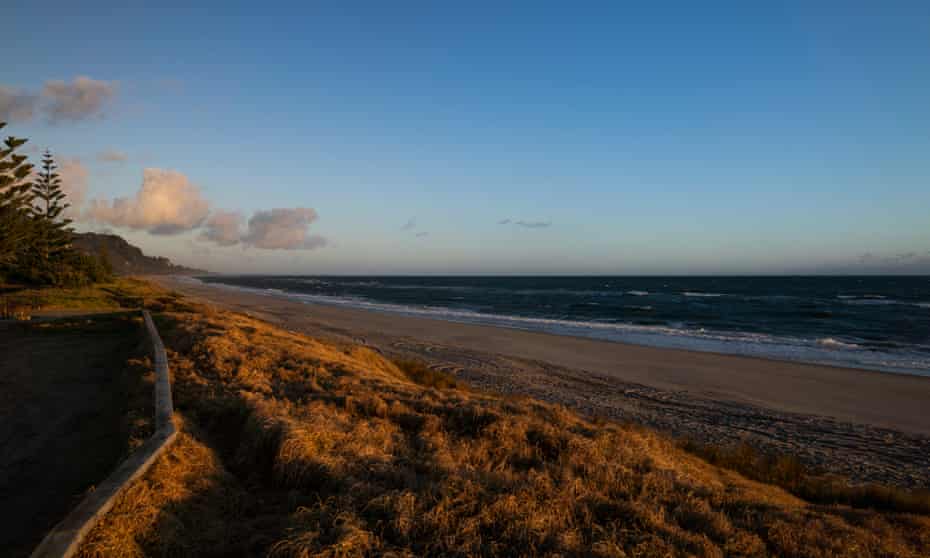
The tiny town of Matata provides a bleak preview of the challenges that could play out across the country in the decades to come
There’s a moment on the road from Auckland to the Bay of Plenty, after hours of farmland, when the view of the sea rears up in front of you. The fields retreat, the horizon expands, the road is lined by Pohutukawa trees clinging to the cliffs. The change in view is as stark as an etch-a-sketch being wiped clean.
Follow that road and you come to a tiny settlement, slipped between the sea and a steep spine of hills running down New Zealand’s Toi-te-Huatahi coastline. Gradually, the once-orderly and plush beachfront homes are disappearing. Houses are replaced with grassed lots, weeds push up through the cul de sac pavements. Soon, the view will be transformed further still, the last remnants of the neighbourhood replaced with a reserve stretching from the road to the sea. On one of the few remaining fences is a sign: “Leave our homes alone! Watch out the rest of New Zealand – you’re next!”
This is Matata. Over the last decade, the settlement has been forced into “managed retreat”, the process where communities, buildings and infrastructure are gradually evacuated from areas designated uninhabitable or dangerous by changing geology, extreme weather or climate change. It has gone badly. After more than a decade of legal and political battles, the remaining residents have become squatters on what was once their own land, furious at what they say is an involuntary eviction. For experts and politicians watching the settlement closely, Matata provides a bleak preview of battles and challenges that could, in the coming decades, play out across New Zealand and around the world.
When is it time to go?
Pam Whalley was in her driveway when it happened. After hours of heavy rain, she and her husband, Bill, had decided to go and check on the creek. “We got halfway down the driveway,” she says, “And there was a wave of water coming up the driveway to the house.” They ran inside, and watched from the upstairs window as it swept through.
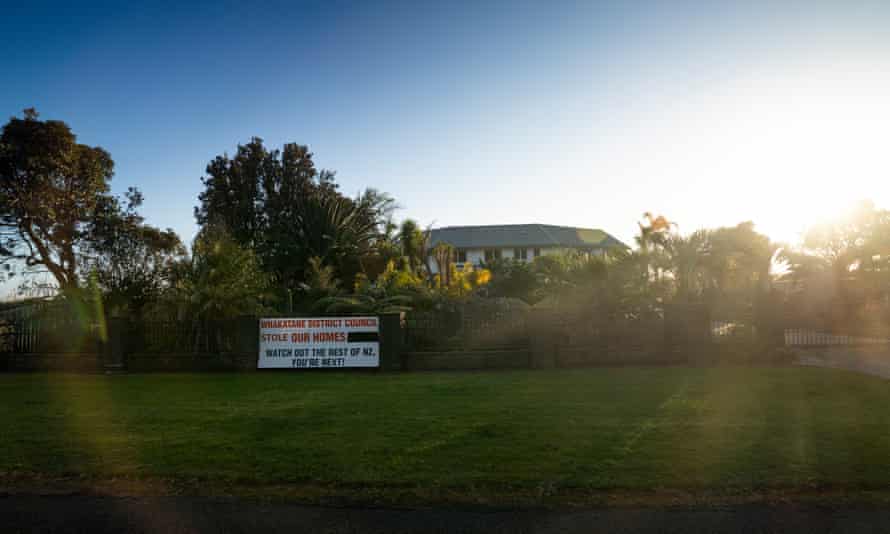

That unexpected wave, as thick as cement, roiling with logs, boulders and debris, would reshape the next 15 years of Whalley’s life, the lives of her neighbours, and the small settlement on the Awatarakiki fanhead.
The struggle that has ensued is the product of a particular place and set of circumstances. But the questions it raises are a microcosm of what is to come, as governments like New Zealand’s reckon with landscapes reshaped by the forces of climate change: plains swept by wildfires, valley towns reshaped by floods, coastal cities eroded by the relentless creep of rising seas. The debris flow that obliterated Matata occurred because of a once-in-500-year level of rainfall. But as the planet heats, it also redistributes rainfall – it may rain less frequently, but that rain is much heavier when it arrives. These kinds of scenarios will become increasingly common. In New Zealand, the government plans to bring in laws to guide the process of managed retreat sometime next year. While other communities face threats from different sources to Matata, the same questions remain: how do you persuade communities to leave their homes? When is it time to go? Who should pay, and how much? And what do you do if they refuse to go?
In the case of Matata, it is the hills, not the waves, that pose the most immediate threat. In 2005, a period of unusually heavy rain unleashed a wall of liquid sludge, that swept down the slope and deposited around 700,000 cubic metres of debris. It destroyed 27 homes and damaged 87.
The saga that followed has dragged out over more than a decade. Council initially proposed building a barrier to protect residents from future debris flows. But the plan failed: after further assessments, council concluded it wouldn’t be sufficient to protect the homes. They switched to managed retreat. In 2016, more than a decade after the initial disaster, council and central government banded together to create a $15m fund to buy out residents. By that point, however, a number of residents say the entire process felt poisoned.
‘Whatever was here has gone’
Greg Fahey calls himself the last man standing. With the Whalleys reluctantly agreeing to leave next year, he is the last remaining resident of Matata who has refused to leave or take a buyout for his property.
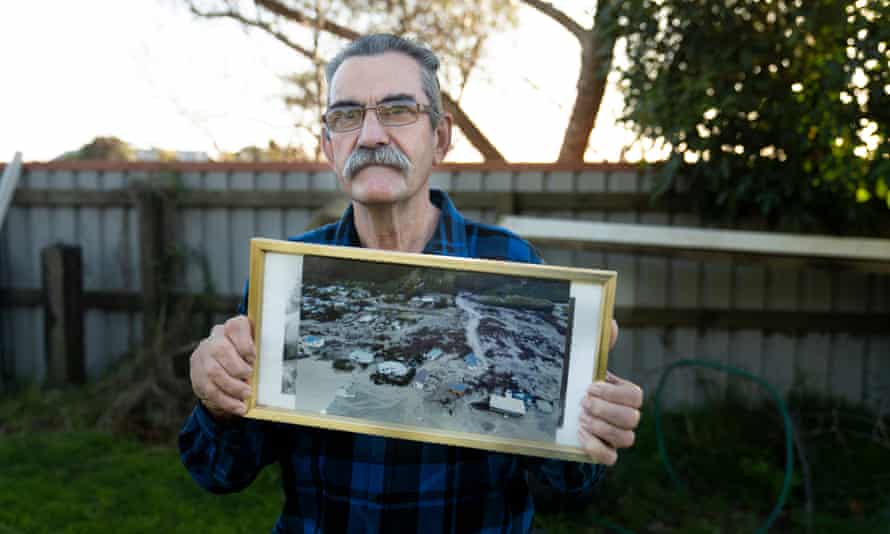
“You know, there was a real peace about this place at one time,” Fahey says. “I’ve walked through the fields coming back from the beach, in some of the sections where the grass is up above your knees now, and there’s a real eerie feeling as you walk through it. It’s like the ground’s not even resting any more. Whatever was here has gone.”
Fahey now lives in a converted container. The house he had planned and consented cannot be built. Over the years, this has become home: Fahey has hung collaged photos and paintings by his grandchildren, alongside a photograph of him with his wife, who lived here until she had to shift to a dementia care unit a few years ago. Sometimes, he says later, she asks if she can come home. “I tell her you can’t come home, because I don’t have a home to bring you back to,” he says. “And that makes me really angry.”
Sitting at the Formica table, he says he misses the small, tight-knit community that used to make up this place. “We used to get together and have a barbecue and stuff,” Fahey says. “Really miss the atmosphere of knowing each other – people just drift away.”
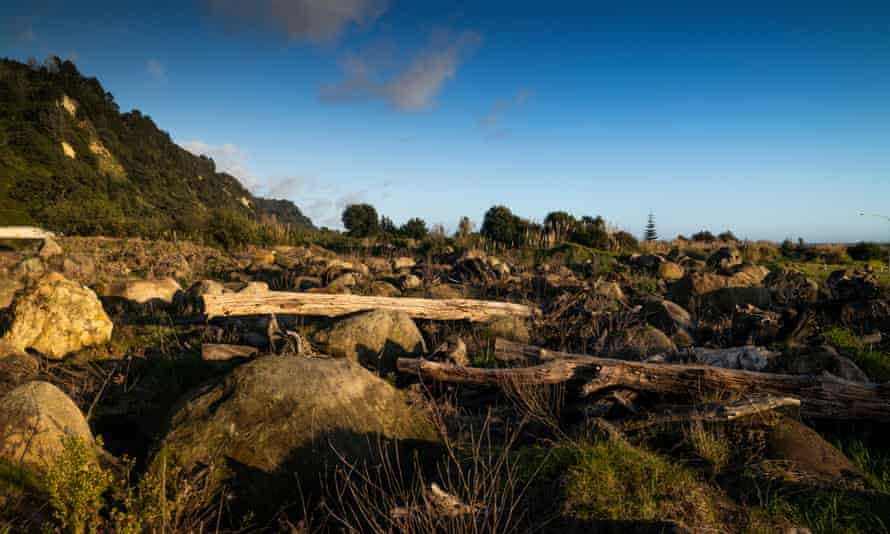
After so many years, he feels that a grave injustice has been done. Staying has become more than just a continued attachment to lifestyle or place – it is a cause in and of itself. If council had come to him in 2012, and made him a fair offer, Fahey now says, he would have accepted. Now, it’s not just the land he wants recompense for – it’s the years of battles and stress. Over time, his reluctance to take what felt like a bad offer has hardened into stubborn resistance to what he sees as a much larger injustice.
Asked whether there is now any figure, or offer, or approach that would change his mind, Fahey pauses for a long time. “This is a real challenging question,” he says.
“If it was about the money, here, just give us $1.5m and I’m gone. You know what I mean?… But how much is the injustice to be dealt with? What price is that?”
“I’m not leaving without compensation, you don’t treat people like this for 16 years and expect them to walk away on your terms.”
A set of psychological challenges
“For me, it’s essentially a socio-political issue, primarily, rather than a technocratic one,” says Dr Rob Bell, one of New Zealand’s foremost coastal hazards experts.
Bell trained as an engineer. But in his years working for NIWA, New Zealand’s crown research institute on water and atmospherics, he came to see managed retreat less as a design question, and more as a much broader set of deeply human and psychological challenges: attachment to place, social and cultural connections, the structure of communities.
Some people “want to defend their property rights to the nth degree, even to the point of futility,” Bell says. “I’ve seen wool bales, railway lines, car bodies, anything and everything, dumped on the coastline to try to stop coastal erosion or coastal flooding. Often, it’s to no avail.”
Humans are keenly attached to their homes. When given an option, homeowners almost always prefer to opt for defence strategies – higher sea walls, levees, dams, planting dunes – rather than upping sticks and leaving. Those incentives are strengthened because in many places, there is public funding for protections, but not to pay people out for retreat.
“We immediately jump to a protection paradigm,” says Dr Judy Lawrence, a researcher looking at managed retreat at Victoria University. “We put up sea walls, and all of them eventually fail … it creates really a huge problem – and we get locked in to responding to people’s expectations that they will continue to be protected.”
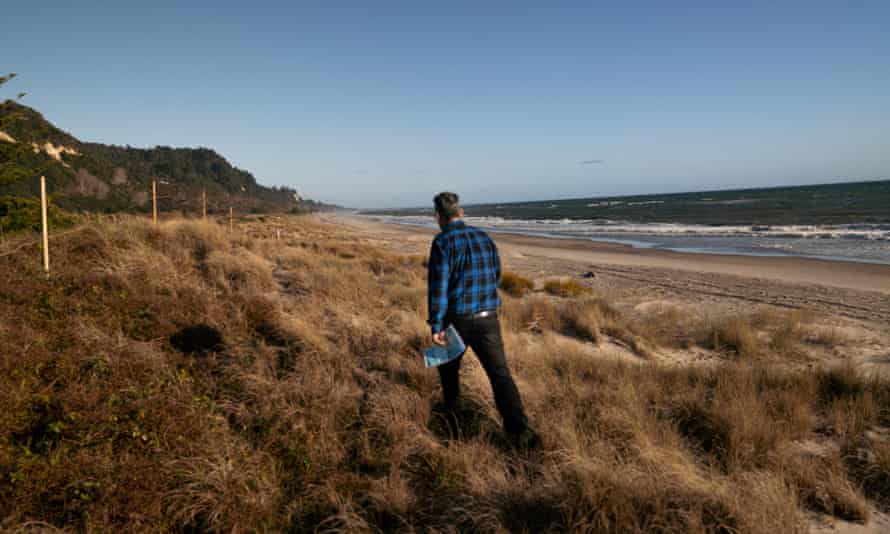
The problem is that in the long run, defence strategies may not work. “When you put the defences up, people hunker down and feel safe,” Bell says. Experts call it “the levee effect” – a paradox where building defences to protect from flooding can increase the eventual damage, because it creates a false sense of security, owners invest more in their property, and by building the wall higher, an eventual breach is worse than it might have otherwise been.
“Getting a sense of ownership in the community about what they can do about it over the long term is extremely important, and getting the buy-in of those people,” she says. “But it takes time.”
“The point is, communities need the opportunity to do that,” she says. “They need the leadership from the council’s to do that. It is costly – but it’s probably less costly than the damage and disruptions, from, you know, being wiped out in a flood.”
The political challenges of providing that kind of leadership are formidable. The financial, emotional, psychological and social costs of uprooting a community are large, and keenly felt by those displaced. The benefits, while clear, are often much longer term. That makes prescribing large-scale managed retreat a deeply unattractive proposition for many politicians.
“Often, non-decisions are made,” Bell says, believing politicians fall into the approach of: “We’ll just wait – it’s not urgent. We’ll wait for more information, the people are attached to that place, we don’t want to uproot them, because we’ll get a lot of kickback.”
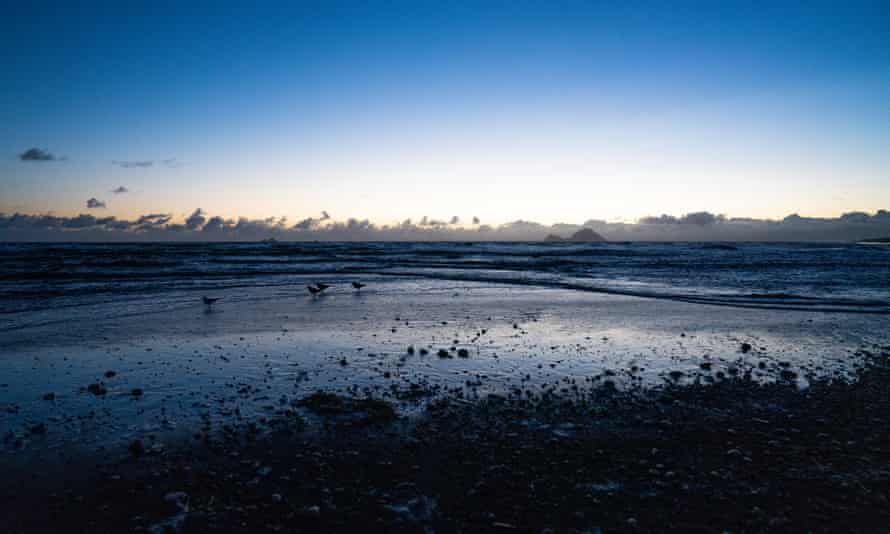
The legislation planned for New Zealand, he says, “needs to be very clear and prescriptive to a certain level, about how this process should happen and how you plan a strategy.”
“What are we going to do, how are we going to take people with us?”
‘We’re the guinea pigs’
Rachel Whalley says it’s been the failures of that process that drove them to fight so hard.
“I feel like we’re the guinea pigs … We’re a test case for the rest of the country,” Whalley says. “Everybody’s sitting on the sidelines watching, but no one’s actually helping. They’re just seeing what will happen when the council and the government do that to us.”
From the Whalleys’ window, you can see the smoke plume from Whakaari/White Island’s volcano curling just above the horizon. Rachel Whalley, Pam’s daughter, remembers the day the volcano erupted in 2019, killing 22. The distant smoke is a living reminder of the consequences of what can happen when risk judgments fail, and nature takes its course. But the Whalleys believe they should be allowed to take on the risk of living at a place like Matata, without the prospect of their homes being stripped of value or services taken away.
“Tell me where in New Zealand I can go, where I’m not faced with a tsunami, earthquake, volcano, flood?” Pam Whalley says. “If I felt like I was in danger, I would leave.”